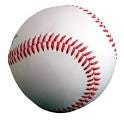Adjustments and Didi
For his first 25 games of the 2018 season — a span that ended on April 27 — Didi Gregorius was hitting .368/.459/.828 and was basically making a case for immortality. My pal Brian Kenny, who had the audacity not to include Gregorius umong his Top 10 shortstops, was spending roughly 95% of his time trying to fight off a screeching mob of Twitter villagers.
It seemed a losing battle. Gregorius had come to the Yankees in 2015 as a no-hit, good-field shortstop whose sole job seemed to be to hold down the fort in the post Derek Jeter years until the Yankees could figure out who wuld really play shortstop for them. He hit a little bit better than expected, then a little bit better than that, then last year he hit .287/.318/.478 with 25 homers, which isn’t A-Rod or Jeter but is quite good.
Then came the crazy start in 2018. Among the man things it did, Didi’s start drove pal and PosCast partner Mike Schur insane. Every single day, it seemed, I would get a text from Mike with the basic premise of, “HOW IS HE DOING THIS??????????”
It was inevitable that Gregorius would cool off, and he did. For about a week, Gregorius hit a lull. He hit .208 over his next six games without a homer, struck out eight times, looked a bit more human. On May 3, he went two-for-five with a double against the Astros and brought his average back up to .333, and …
And …
Didi Gregorius has been helpless ever since. Utterly helpless. He is one for his last 42. His season batting average has plummeted to .248. His OPS is down more than 400 points from its apex in late April. He looks helpless and hopeless and nobody is crashing Brian Kenny’s Twitter account with Didi love these days.
So my question: What happened? Can we figure out why Didi Gregorius is struggling? We have a lot more tools at our disposal these days — it used to be that slumps were theses mysterious things that would just happen to us periodically like gray moods or “Grown Ups” movies. But now we can see many different data points.
For instance, we can see if pitchers are pitching him differently. They do seem to be pitching him somewhat differently. Look at the pitch breakdown against Gregorius on April 27, when he was basically Godzilla:
Fastballs: 58%
Breaking balls: 22%
Offspeed: 20%
Pitchers were attacking Gregorus by changing speeds, moving the ball around, working the corners … and he was absolutely lighting them up. He was hitting .375 on offspeed stuff and .429 on fastballs. So you would think that pitchers would throw him more breaking balls (he was just 2 for 12 on the breaking ball).
And you would be right. Since April 28:
Fastballs: 60%
Breaking balls: 28%
Offspeed: 12%
So that makes sense. More breaking balls. Fewer offspeed pitches.
During his mega-slump the last two-plus weeks, though, piitchers have come at Gregorius even harder, with more fastballs. Since May 4:
Fastballs: 64%
Breaking balls: 21%
Offspeed: 15%
So that’s interesting. Is this what is making the difference? It could be. Since April 28, Gregorius is hitting .093 on fastballs he has put in play. But, let’s face it, he isn’t hitting ANYTHING since April 28. He is 2-for-13 on curveballs and 0-for-9 on offspeed pitches so it’s hard to say that the types of pitches are the key here.
What about location? Well, pitchers are keeping the ball away from Gregorius more — throwing 57% of their pitches away compared to 52% during his hot stretch — so there could be something to that. The trouble with that theory is that Gregorius has historically hit the ball harder on outside pitches — his hot zone this year has been up-and-away.
What else? Well there’s the defensive shift. In years past, teams almost never shifted Gregorius — he was only shifted against 2.5% of the time last year. But this year, as Gregorius got hotter and pulled the ball more, teams began shifting him more. They shifted him more than 33% of the time when he was hot, and he crushed the shift (a .416 weighted on-base).
Since then, teams have been shifting him a bit more selectively — down below 20% of the time — and he has had no success at all against it. So it is possible that teams are defending him more effectively.
The trouble with all this is is that when you’re not hitting the way Gregorius is not hitting, it will impact every statistic. Across the board, Didi Gregorius has stopped hitting.
And that gets to the essence of it all: Epic slumps like this one are never tied to one thing. This might be why they are so mysterious. Sure we can drill down more than ever before and learn all sorts of useful and fascinating things. But in the end, great hitting is a marvelous blend of skill and timing and confidence and luck.
And adjustments. Pitchers will always try things, always try to challenge hitters in new ways to exploit their weaknesses. That’s the point.
“See if you can hit my curve,” Ray Kinsella said to Shoeless Joe Jackson after having a series of fastballs crushed all over the cornfield. Shoeless Joe rockets one by his ear.
“Try this one grandpa,” the pitcher says to Roy Hobbs after giving up a series of monster batting practice homers. Hobbs crushed that one too.
“Yeah, they stopped throwing me fastballs,” George Brett said about the seasons after 1980, when he almost hit .400. “So I really learned to hit the breaking ball.”
The immortals always find a way. The rest, Didi Gregorius included, just try to adapt best they can.
Originally published at joeposnanski.com on May 20, 2018.
